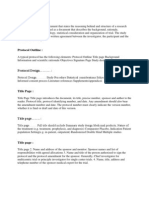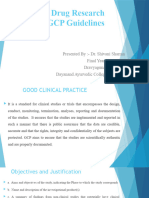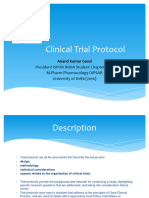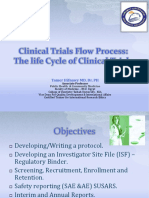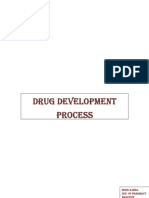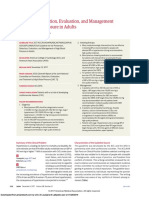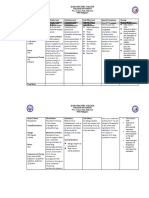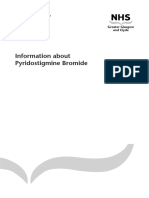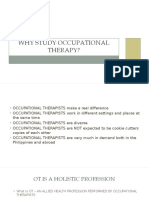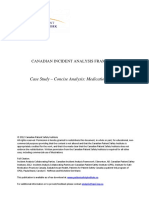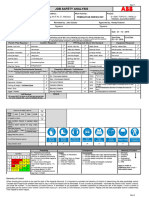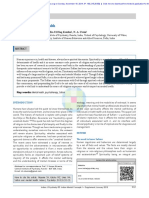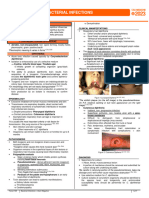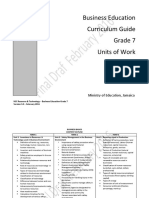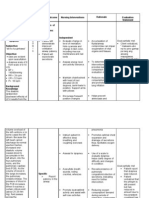0% found this document useful (0 votes)
16 views13 pagesDebojyoti - Assignment Ex - 16,17 (2nd Sem)
The document outlines the design and components of clinical trial protocols, emphasizing their importance in ensuring the safety of trial subjects and the integrity of collected data. It details the meticulous process of protocol development, including objectives, study design, ethical considerations, and data management. Additionally, it introduces the design of an adverse drug reaction (ADR) monitoring protocol, focusing on detecting ADRs, assessing drug safety, and improving patient outcomes.
Uploaded by
n449skp29kCopyright
© © All Rights Reserved
We take content rights seriously. If you suspect this is your content, claim it here.
Available Formats
Download as PDF, TXT or read online on Scribd
0% found this document useful (0 votes)
16 views13 pagesDebojyoti - Assignment Ex - 16,17 (2nd Sem)
The document outlines the design and components of clinical trial protocols, emphasizing their importance in ensuring the safety of trial subjects and the integrity of collected data. It details the meticulous process of protocol development, including objectives, study design, ethical considerations, and data management. Additionally, it introduces the design of an adverse drug reaction (ADR) monitoring protocol, focusing on detecting ADRs, assessing drug safety, and improving patient outcomes.
Uploaded by
n449skp29kCopyright
© © All Rights Reserved
We take content rights seriously. If you suspect this is your content, claim it here.
Available Formats
Download as PDF, TXT or read online on Scribd
/ 13








